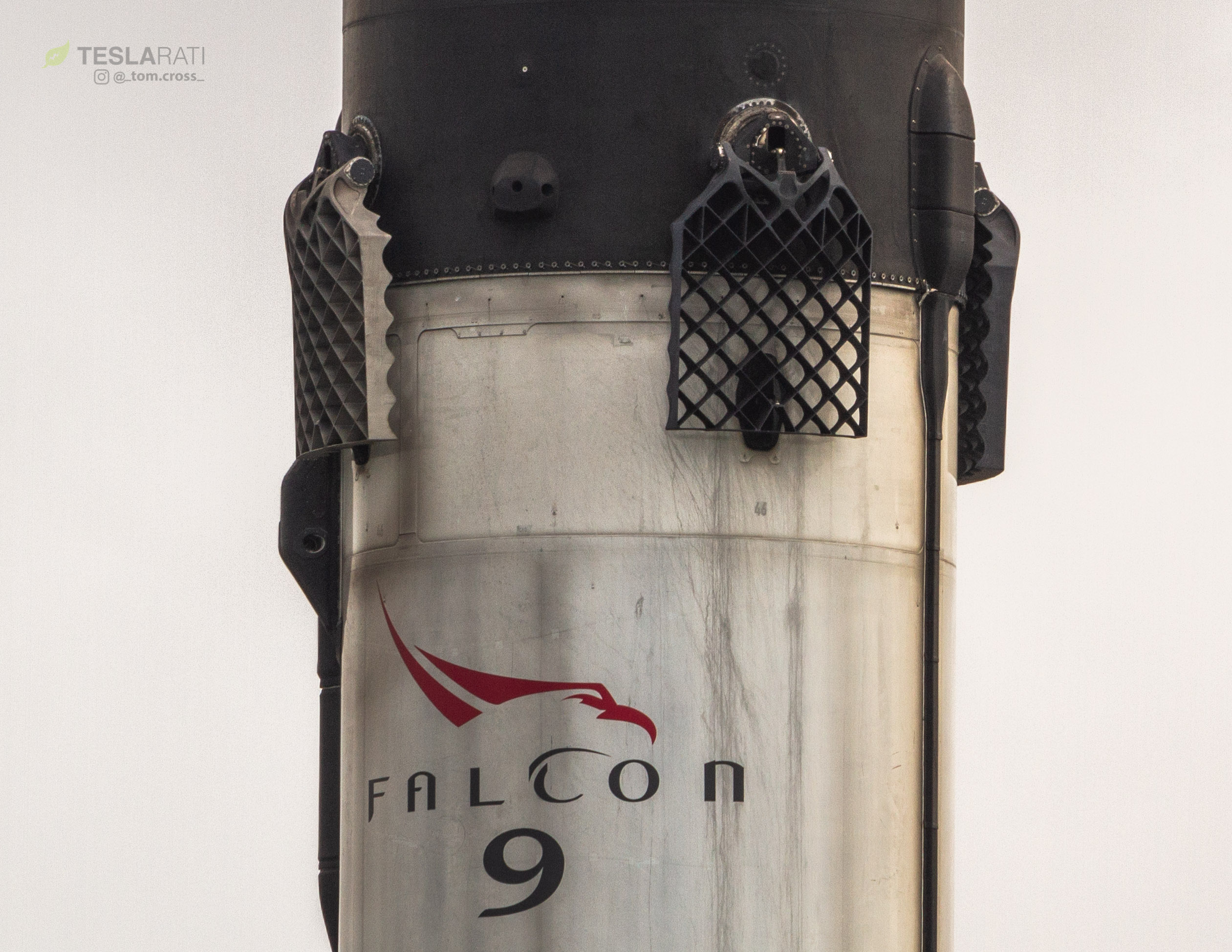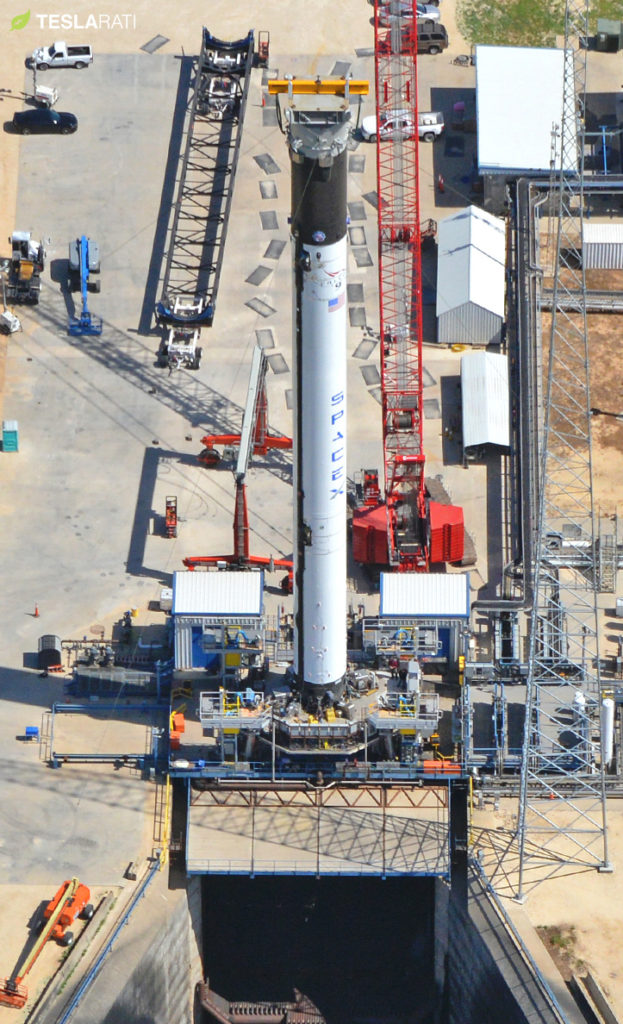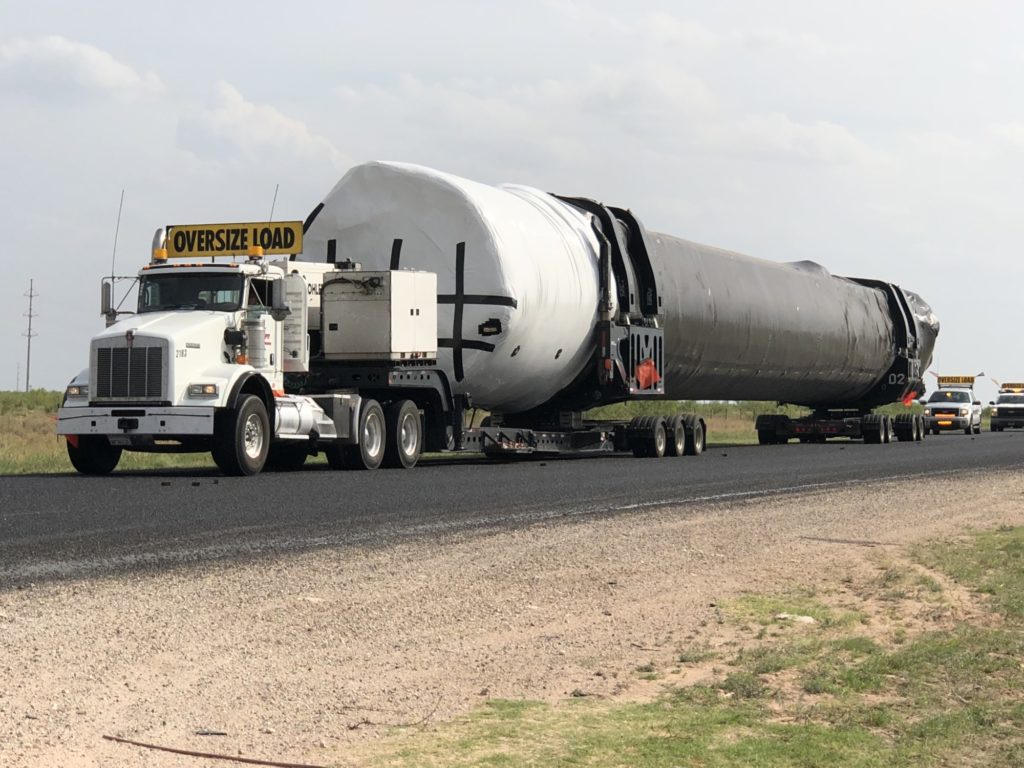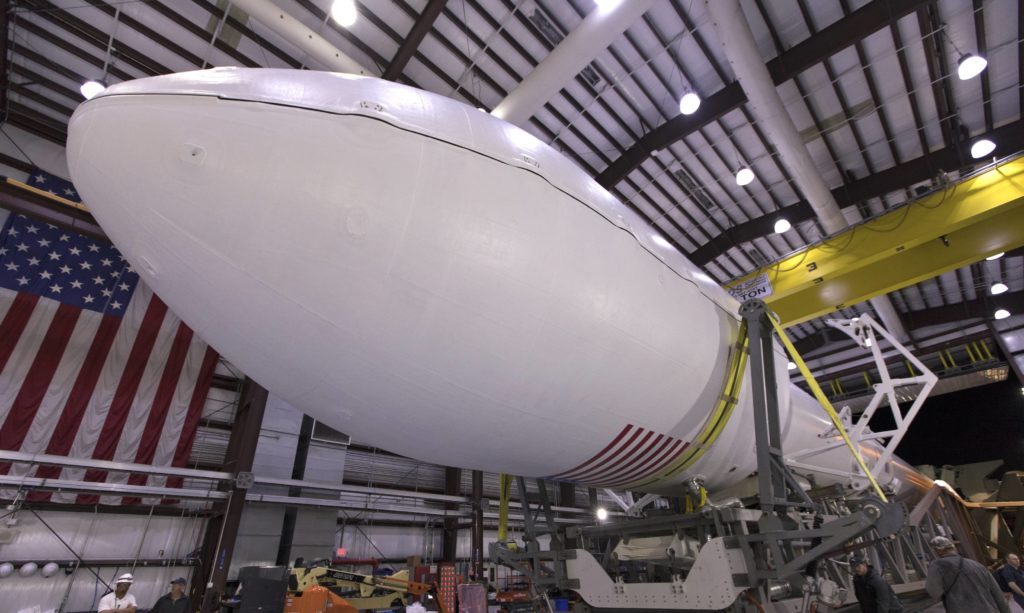

News
SpaceX targets back-to-back Falcon 9 Block 5 launch and landing in July
As the end of June fast approaches, SpaceX’s July launch manifest has begun to coalesce around at least one pair of launches on July 18 and 20, a schedule that might see the company’s next two new Block 5 Falcon 9 boosters fly from West and East coasts with just 30 hours between them.
While not exactly the 24-hour reuse CEO Elon Musk set the company to by end of 2019, two back-to-back launches of new Block 5 boosters would seem to signify an increasing level of operational confidence in the rocket’s new, upgraded configuration, as well as a return to form in factory production of the complex Falcon 9 boosters, only four of which have shipped in the last seven months.

The first Block 5 Falcon 9 lifts off on May 4, 2018. Cheaper launches as a result of reusable rockets may not necessarily increase demand for satellite launches. (Tom Cross)
As it stands today, SpaceX’s West Coast customer Iridium confirmed on June 15th that the company’s 7th contracted Falcon 9 launch is scheduled for early morning on July 20, and Iridium CEO Matt Desch noted that such an early launch just before sunrise holds the potential to create another scare like that from Iridium-4 in December 2017 that had Los Angeles suspecting an alien invasion.
Now that you have the date and time, you should note that it's about 10 minutes after "first light", but still an hour before sunrise at VAFB. Not sure if it will work out or not, but there is potential for another nice "show" like we had in December for L-4.. #LetsScareLAAgain https://t.co/BIyKrwhrof
— Matt Desch (@IridiumBoss) June 15, 2018
It has yet to be explicitly confirmed, but the booster set to launch that mission from Vandenberg Air Force Base all but has to be B1048, SpaceX’s third full Falcon 9 Block 5 rocket. Barring delays, B1047 – the second Block 5 booster, spotted near Cape Canaveral, FL last week – will launch the Telstar 19V geostationary communications satellite a bit more than a day before – July 18th – from SpaceX’s LC-40 pad in Florida. Aside from being the foundational second and third launches of Falcon 9 Block 5, the missions will also feature two drone ship landings in the Pacific and Atlantic Oceans aboard Just Read The Instructions (JRTI) and Of Course I Still Love You (OCISLY).
Putting their titanium grid fins, upgraded heat shields, uprated Merlin engines, and myriad improvements and optimizations to good use, both B1047 and B1048 will – with a little luck – complete their first recoveries of anywhere from ten to a hundred before being secured on the autonomous vessels and carried back to their respective ports within roughly 24 hours of each other. Once there, B1048 (Iridium-7) will likely be shipped a few miles north to SpaceX’s Hawthorne factory, while B1047 will be driven on a purpose-built rocket carrier to one of SpaceX’s several Floridan facilities outfitted for rocket refurbishment.
- B1047 captured testing in McGregor, Texas, April 2018. (Teslarati/Aero Photo)
- What was likely B1049 spotted heading to McGregor, Texas for static fire testing, June 11. (TeslaMotorsClub /u/nwdiver)
- Falcon 9 B1045 prepares for its first flight, the launch of NASA’s TESS exoplanet observatory. (SpaceX)
Time will be of the essence more than ever before for those refurbishments, as the combined fleet of B1047 and B1048 will have to suffice for any additional launches scheduled for late July or early August, the only alternatives being the rapid shipment and testing of B1049 or simply delaying those launches until boosters can be (safely) made available. Block 5’s purpose-built reusability and reliability-focused upgrades will thus be subjected to a near-immediate trial by fire if SpaceX’s engineers and technicians are happy with the first Block 5 rocket’s teardown analysis and the company is up for the challenge.
Up next, fittingly, is the final orbital launch of a (flight-proven) Block 4 version of Falcon 9, itself likely to smash SpaceX’s previous record for time between two flights of the same booster. The mission, CRS-15, will see another flight-proven orbital Cargo Dragon capsule sent to the International Space Station aboard a flight-proven rocket booster, a veritable tip of the hat at SpaceX’s future ambitions with BFR. CRS-15 is scheduled to launch at 5:41am EDT, June 28.
Follow us for live updates, peeks behind the scenes, and photos from Teslarati’s East and West coast photographers.
Teslarati – Instagram – Twitter
Tom Cross – Twitter
Pauline Acalin – Twitter
Eric Ralph – Twitter
News
Tesla begins Robotaxi certification push in Arizona: report
Tesla seems serious about expanding its Robotaxi service to several states in the coming months.

Tesla has initiated discussions with Arizona transportation regulators to certify its driverless Robotaxi service in the state, as per a recent report from Bloomberg News. The move follows Tesla’s launch of its Robotaxi pilot program in Austin, Texas, as well as CEO Elon Musk’s recent comments about the service’s expansion in the Bay Area.
The Arizona Department of Transportation confirmed to Bloomberg that Tesla has reached out to begin the certification process for autonomous ride-sharing operations in the state. While details remain limited, the outreach suggests that Tesla is serious about expanding its driverless Robotaxi service to several territories in the coming months.
The Arizona development comes as Tesla prepares to expand its service area in Austin this weekend, as per CEO Elon Musk in a post on X. Musk also stated that Tesla is targeting the San Francisco Bay Area as its next major market, with a potential launch “in a month or two,” pending regulatory approvals.
Tesla first launched its autonomous ride-hailing program on June 22 in Austin with a small fleet of Model Y vehicles, accompanied by a Tesla employee in the passenger seat to monitor safety. While still classified as a test, Musk has said the program will expand to about 1,000 vehicles in the coming months. Tesla will later upgrade its Robotaxi fleet with the Cyercab, a two-seater that is designed without a steering wheel.
Sightings of Cybercab castings around the Giga Texas complex suggests that Tesla may be ramping the initial trial production of the self-driving two-seater. Tesla, for its part, has noted in the past that volume production of the Cybercab is expected to start sometime next year.
In California, Tesla has already applied for a transportation charter-party carrier permit from the state’s Public Utilities Commission. The company is reportedly taking a phased approach to operating in California, with the Robotaxi service starting with pre-arranged rides for employees in vehicles with safety drivers.
News
Tesla sets November 6 date for 2025 Annual Shareholder Meeting
The automaker announced the date on Thursday in a Form 8-K.

Tesla has scheduled its 2025 annual shareholder meeting for November 6, addressing investor concerns that the company was nearing a legal deadline to hold the event.
The automaker announced the date on Thursday in a Form 8-K submitted to the United States Securities and Exchange Commission (SEC). The company also listed a new proposal submission deadline of July 31 for items to be included in the proxy statement.
Tesla’s announcement followed calls from a group of 27 shareholders, including the leaders of large public pension funds, which urged Tesla’s board to formally set the meeting date, as noted in a report from The Wall Street Journal.
The group noted that under Texas law, where Tesla is now incorporated, companies must hold annual meetings within 13 months of the last one if requested by shareholders. Tesla’s previous annual shareholder meeting was held on June 13, 2024, which placed the July 13 deadline in focus.
Tesla originally stated in its 2024 annual report that it would file its proxy statement by the end of April. However, an amended filing on April 30 indicated that the Board of Directors had not yet finalized a meeting date, at least at the time.
The April filing also confirmed that Tesla’s board had formed a special committee to evaluate certain matters related to CEO Elon Musk’s compensation plan. Musk’s CEO performance award remains at the center of a lengthy legal dispute in Delaware, Tesla’s former state of incorporation.
Due to the aftermath of Musk’s legal dispute about his compensation plan in Delaware, he has not been paid for his work at Tesla for several years. Musk, for his part, has noted that he is more concerned about his voting stake in Tesla than his actual salary.
At last year’s annual meeting, TSLA shareholders voted to reapprove Elon Musk’s compensation plan and ratified Tesla’s decision to relocate its legal domicile from Delaware to Texas.
Elon Musk
Grok coming to Tesla vehicles next week “at the latest:” Elon Musk
Grok’s rollout to Tesla vehicles is expected to begin next week at the latest.

Elon Musk announced on Thursday that Grok, the large language model developed by his startup xAI, will soon be available in Tesla vehicles. Grok’s rollout to Tesla vehicles is expected to begin next week at the latest, further deepening the ties between the two Elon Musk-led companies.
Tesla–xAI synergy
Musk confirmed the news on X shortly after livestreaming the release of Grok 4, xAI’s latest large language model. “Grok is coming to Tesla vehicles very soon. Next week at the latest,” Musk wrote in a post on social media platform X.
During the livestream, Musk and several members of the xAI team highlighted several upgrades to Grok 4’s voice capabilities and performance metrics, positioning the LLM as competitive with top-tier models from OpenAI and Google.
The in-vehicle integration of Grok marks a new chapter in Tesla’s AI development. While Tesla has long relied on in-house systems for autonomous driving and energy optimization, Grok’s integration would introduce conversational AI directly into its vehicles’ user experience. This integration could potentially improve customer interaction inside Tesla vehicles.
xAI and Tesla’s collaborative footprint
Grok’s upcoming rollout to Tesla vehicles adds to a growing business relationship between Tesla and xAI. Earlier this year, Tesla disclosed that it generated $198.3 million in revenue from commercial, consulting, and support agreements with xAI, as noted in a report from Bloomberg News. A large portion of that amount, however, came from the sale of Megapack energy storage systems to the artificial intelligence startup.
In July 2023, Musk polled X users about whether Tesla should invest $5 billion in xAI. While no formal investment has been made so far, 68% of poll participants voted yes, and Musk has since stated that the idea would be discussed with Tesla’s board.
-

 Elon Musk1 week ago
Elon Musk1 week agoTesla investors will be shocked by Jim Cramer’s latest assessment
-

 Elon Musk20 hours ago
Elon Musk20 hours agoxAI launches Grok 4 with new $300/month SuperGrok Heavy subscription
-

 Elon Musk3 days ago
Elon Musk3 days agoElon Musk confirms Grok 4 launch on July 9 with livestream event
-

 News7 days ago
News7 days agoTesla Model 3 ranks as the safest new car in Europe for 2025, per Euro NCAP tests
-

 Elon Musk2 weeks ago
Elon Musk2 weeks agoA Tesla just delivered itself to a customer autonomously, Elon Musk confirms
-

 Elon Musk1 week ago
Elon Musk1 week agoxAI’s Memphis data center receives air permit despite community criticism
-

 Elon Musk2 weeks ago
Elon Musk2 weeks agoTesla’s Omead Afshar, known as Elon Musk’s right-hand man, leaves company: reports
-

 News2 weeks ago
News2 weeks agoXiaomi CEO congratulates Tesla on first FSD delivery: “We have to continue learning!”






















